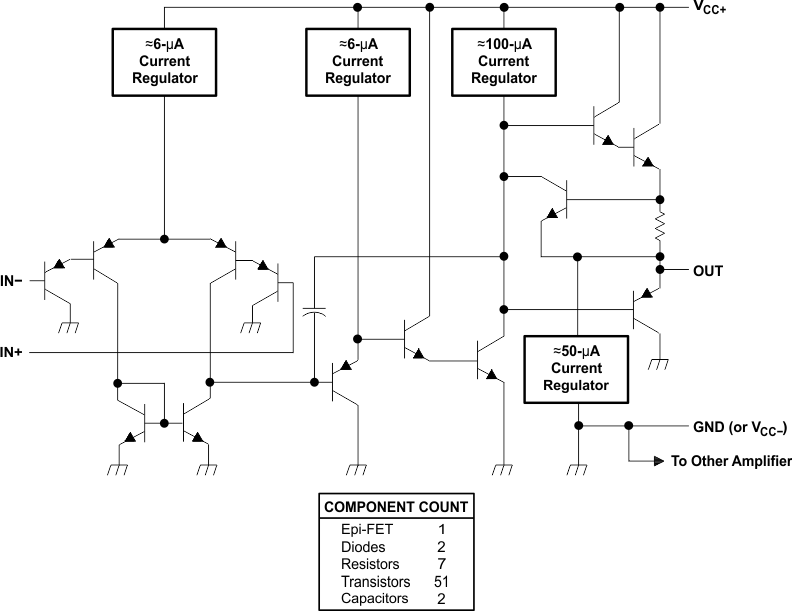SLOA277B january 2019 – july 2023 LM124 , LM124-N , LM124A , LM158 , LM158-N , LM158A , LM224 , LM224-N , LM224A , LM258 , LM258-N , LM258A , LM2902 , LM2902-N , LM2902-Q1 , LM2902K , LM2902KAV , LM2904 , LM2904-N , LM2904-Q1 , LM2904B , LM2904B-Q1 , LM2904BA , LM321 , LM324 , LM324-N , LM324A , LM358 , LM358-N , LM358A , LM358B , LM358BA , TS321 , TS321-Q1
1.1 Common Schematic
This application note covers all op amps that are based on the simplified schematic in Figure 1-1, which contains a unique output stage that was revolutionary when released. Unlike other op amps of the time, it supports a near ground output voltage useful for single supply designs. The ~50-µA Current Regulator can pull the output close to ground because the other transistor emitters do not have a strong opposing current flow, unlike other op amps of this time period.
 Figure 1-1 Device Schematic from Data Sheet
Figure 1-1 Device Schematic from Data Sheet